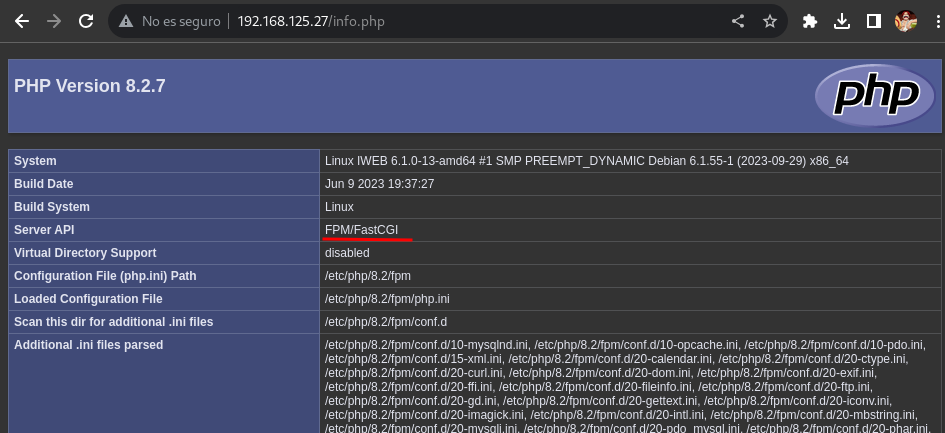LEMP Stack Installation in Debian 12 with PHP 8
LEMP Stack Installation in Debian 12 with PHP 8
In this guide, we will go through the steps to install a LEMP stack (Linux, Nginx, MariaDB, and PHP) on a Debian 12 server. The configuration includes PHP 8.2 as the main version. The LEMP stack is essential for hosting PHP-based websites and applications, such as WordPress or other dynamic applications. Follow the detailed steps below to configure your LEMP server with PHP 8.2.
Prerequisites
Before starting, ensure you meet the following requirements:
- A Linux server.
- A non-root user with sudo privileges.
- A fully qualified domain name (FQDN) that points to the server.
First, update and upgrade the system packages:
sudo apt update && sudo apt upgrade -y
Additionally, install the following essential packages:
sudo apt install wget nano unzip tar -y
PHP Installation
Debian 12 includes PHP 8.2 by default. Install it using the following command:
sudo apt install php-fpm php-cli php-mysql php-mbstring php-xml php-gd -y
This installs PHP along with MySQL, CLI, GD, Mbstring, and XML extensions. You can install additional extensions based on your requirements. To verify the PHP installation, run:
php --version
MariaDB Installation
You can use either MariaDB or MySQL. In this case, we will use MariaDB:
sudo apt install mariadb-server -y
sudo systemctl enable mysql && sudo systemctl start mysql
During installation, you will be prompted to set a password for the MySQL root user. Once installation is complete, secure your MariaDB installation with:
sudo mysql_secure_installation
Follow the instructions to enhance security, such as setting the root user password, removing anonymous users, and deleting test databases.
To verify MariaDB, log in via the terminal:
sudo mysql -u root -p
Enter password:
Nginx Installation
To install Nginx, run:
sudo apt install nginx -y
Once Nginx is installed, configure PHP-FPM to use a TCP socket.
Open the PHP-FPM configuration file:
sudo nano /etc/php/8.2/fpm/pool.d/www.conf
Find the following line and comment it out:
;listen = /run/php/php8.2-fpm.sock
Then, replace it with:
listen = 127.0.0.1:9000
Save and close the file.
Now, configure Nginx to work with PHP-FPM by editing the default server block:
sudo nano /etc/nginx/sites-available/default
Modify the file as follows:
server {
listen 80 default_server;
listen [::]:80 default_server;
root /var/www/html;
index index.html index.php index.htm index.nginx-debian.html;
server_name _;
location / {
try_files $uri $uri/ =404;
}
location ~ \.php$ {
include snippets/fastcgi-php.conf;
fastcgi_pass 127.0.0.1:9000;
include fastcgi_params;
}
}
Save the changes and exit.
Testing Configuration and Restarting Services
Check for syntax errors in Nginx:
sudo nginx -t
Check PHP-FPM configuration:
sudo php-fpm8.2 -t
If no errors are found, restart both services:
sudo systemctl restart php8.2-fpm nginx
Verifying PHP Processing
Create a test PHP file to confirm PHP processing:
sudo nano /var/www/html/info.php
Add the following content:
<?php
phpinfo();
?>
Save and close the file. You can access it in your browser at:
http://your_domain_or_IP/info.php
If PHP information is displayed, your LEMP stack is correctly installed.

With this, you now have a fully installed and configured LEMP stack on Debian 12.
